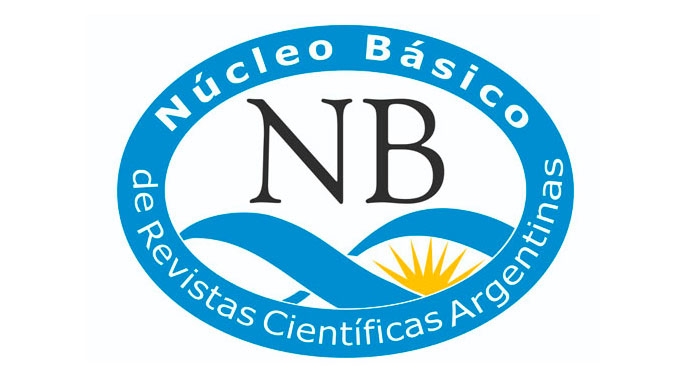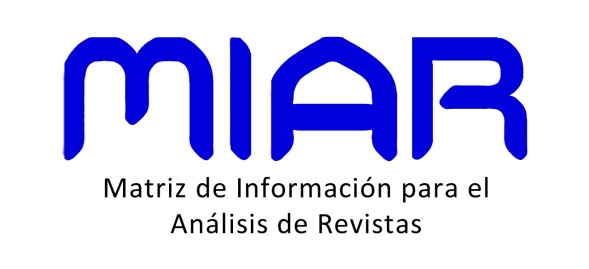La adquisición de un equipo de alto desempeño como alternativa en la estrategia de crecimiento inorgánico
DOI:
https://doi.org/10.24215/23143738e001Palabras clave:
Adquisición de equipos de alto desempeño; Estrategias de crecimiento; Crecimiento inorgánico; Crecimiento orgánico., Adquisición de equipos de alto desempeño, estrategias de crecimiento, crecimiento inorgánico, crecimiento orgánico.Resumen
En el presente artículo se analiza la adquisición de un equipo de alto desempeño (EAD) como una nueva alternativa de crecimiento inorgánico. El trabajo consiste en una reflexión teórica que se identifica a partir de una situación real de negocio ocurrida en el año 2006, en la que un EAD en el sector de banca privada en Estados Unidos fue contratado por un banco competidor. Para ello, se discuten diversas estrategias de crecimiento, tanto orgánicas como inorgánicas, y luego se desarrolla la adquisición de EAD dentro del análisis de las estrategias de crecimiento inorgánico. El desarrollo profundiza en cinco aspectos muy importantes de una estrategia de crecimiento inorgánico: la marca, lo legal, las características de la industria, lo cultural y los costos.
Descargas
Referencias
Anderson, D. (2012). Organization Development Interventions and Four Targets of PostAcquisition. OD Practicioner, 44(3), 19-24.
Anderssen, K. B., Coearlehen, S., Horwitz, F. M., Kirsten, F. y Mosoeunyane, K. (2002). Due Diligence Neglected: Managing. South African Journal of Business Management, 33(1), 1-10.
Araneda, K., Cordero, P. y Landaeta, F. (2006). Modelo de EAD: Una propuesta experiencial. Tesis de Maestría. Universidad Adolfo Ibáñez.
Ayyagari, M., Demirguc-Kunt, A. y Maksimovic, V. (2011). Small vs Young Firms across the World. Washington, DC: The World Bank. Recuperado el 25 de Noviembre de 2013, de http://elibrary.worldbank.org/doi/pdf/10.1596/1813-9450-5631.
Bacharach, P. y Bamberger, P. (2005). Diversity and Homophily at Work: Supportive Relations among White and African-American. Academy of Management Journal, 48(4), 619–644.
Bahadir, S., Bharadwaj, S. y Srivastava, K. (2008). Financial Value of Brands in Mergers and Acquisitions: Is Value in the Eye of the Beholder? Journal of Marketing, 72(6), 49-64.
Banco Mundial. (2012). World Development Indicators. Washington, DC: The World Bank. Recuperado el 28 de Octubre de 2013, de http://wdi.worldbank.org/tables.
Barrett, M. y Oborn, E. (2010). Boundary object use in cross-cultural software development teams. Human Relations, 63(8), 1199–1221.
Basu, K. (2006). Merging Brands after Mergers. California Management Review, 48(4), 28-40. Obtenido de Merging Brands after Mergers. California Management Review.
Brakman, S., H., G., van Marrewijk, C.y van Witteloustuijn, A. (2013). CrossBorder Merger & Acquisition Activity and Revealed Comparative Advantage in Manufacturing Industries. Journal of Economics and Management Strategy, 22(1), 28-57.
Bruner, R. (2002). Does M&A Pay? A Survey of Evidence for the Decision-Maker. Journal of Applied Finance, 12(1), 48-68.
Butler, F., Perryman, A.y Ranft, A. (2012). Examining the Effects of Acquired Top Management Team Turnover on Firm Performance Post-acquisition: a Meta Analysis. Journal of Managerial Issues, 24(1), 47-60.
Carman, J. M.y Langeard, E. (1980). Growth Strategies for Service Firms. Strategic Management Journal, 1(1), 7-22.
Chen, G., Kirkman, B., Kim, K., Farh, C.y Tangirala, S. (2010). When does cross-cultural motivation enhance expatriate effectiveness? A multilevel investigation of the moderating roles of subsidiary support and cultural distance. Academy of Management Journal, 53(5), 1110-1130.
Chulià, É. V.y Beltrán, T. A. (1992). Aspectos jurídicos de los contratos atípicos I. Barcelona: J. M. Bosch Editor. Obtenido de VLex Información Jurídica Inteligente.
Creelman, D.y Kaiser, R. B. (2009). The Value of Hiring for Team Fit. Leadership in Action, 29(4), 23-24.
Cusumano, M.y Von Krogh, G. (2001). Three Strategies for Managing Fast Growth. MIT Sloan Managemente Review, 42(2), 53-61.
Dacin, M. T., Oliver, C.y Roy, J. P. (2007). The Legitimacy of Strategic Alliances: An Institutional Perspective. Strategic Management Journal, 28(2), 169-187.
Del Prado, L. (2005). Alianzas estratégicas. Boletín de Lecturas Sociales y Económicas, 13(1), 68-87.
Edwards, M.y Edwards, T. (2013). Employee Responses to Changing Aspects of Employer Brand Following a Multinational Acquisition: A Longitudinal Study. Human Resource Management, 52(1), 27-54.
Fernández, I.y Ananías, M. (2006). Incentivos a Largo Plazo para la Retención de Talentos. Serie Psicología y Empresa (8), 1-13.
Fernández, I.y Winter, T. (2003). Equipos de alto desempeño. Serie Psicología y Empresa(4), 1-26.
Forsgren, M. (2013). Theories of the multinational firm: A multidimensional creature in the global economy. Cheltenham, UK: Edward Elgar.
Groysberg, B., Nanda , A.y Nohria , N. (2004). The Risky Business of Hiring Stars. Harvard Business Review, 82(5), 92-100.
Gurtler, O.y Krakel, M. (2009). Hostile Takeover and Costly Merger Control. Public Choice, 141(3), 371-389.
Halpern, P. (1983). Corporate Acquisitions: A Theory of Special Cases? A Review of Event Studies Applied to Acquisitions. Journal of Finance, 38(2), 297-317.
Huckman, R.y Staats, B. (2013). The hidden benefits of keeping teams intact. Harvard Business Review, 91(12), 27-29.
Hussain, S. F., Nassir, T.y Zaman, K. (2013). A Literature Review on Growth Model and Strategies: The Missing Link in Entrepeneurial Growth. Management Science Letters, 3(1), 2189-2200.
Johnson, S. A.y Houston, M. B. (2000). A Reexamination of the Motives and Gains in Joint Ventures. Journal of Financial and Quantitative Analysis, 35(1), 67-85.
Kent, D. H. (1991). Joint Ventures vs Non-Joint Ventures: An Empirical Investigation. Strategic Management Journal, 12(5), 387-393.
Larsson, R.y Lubatkin, M. (2001). Achieving Acculturation in Mergers and Acquisitions: An International Case Survey. Human Relations , 54(12), 1573–1607.
Lassini, U., Salvato, C.y Wiklund, J. (2007). Dynamics of External Growth in SMEs: A Process Model of Acquisition Capabilities Emergence. Schmalenbach Business Review, 59(3), 282-305.
Lengnick-Hall, C. A., Lengnick-Hall, M. L., Mciver, D.y Ramachandran, I. (2013). Understanding Work and Knowledge Management from a Knowledge-In-Practice Perspective. Academy of Management Review, 38(4), 597-620.
Li, J., Karakowsky, L.y Lam, K. (2002). East meets east and east meets west: the case of sino-japanese and sino-west joint ventures in China. Journal of Management Studies , 39(6), 841-863.
Lin, C.y Wei, Y. C. (2006). The Role of Business Ethics in Merger and Acquisition Success: An Empirical Study. Journal of Business Ethics, 69(1), 95-109.
Lockett, A., Wiklund, J., Davidsson, P.y Girma, S. (2011). Organic and Acquisitive Growth: Re-examining, Testing and Extending Penrose´s Growth Theory. Journal of Management Studies, 48(1), 48-74.
MacMillan, P. (2001). The Performance Factor: Unlocking the Secrets of Teamwork. Teneessee: H&P Publishing Group.
McGregor, J. (2006). I Can´t Believe They Took the Whole Team. Business Week, 4014, 120-122.
Meyer, K. E.y Estrin, S. (2001). Brownfield entry in emerging market. Journal of International Business Studies, 32(3), 257-267.
Moisescu, O. I.y Vu, D. A. (2011). An Exploratory Research for Establishing a Brand Due Diligence Checklist in Mergers and Acquisitions. Romanian Journal of Marketing, 6(2), 2-16.
Pasanen, M. (2007). SME Growth Strategies: Organic or Non-organic? Journal of Enterprising Culture, 15(4), 317-338.
Peng, M. W. (2013). Global 2. Masson, OH, USA.
Pfeffer, J. (1982). Organizations and Organization Theory. Boston: MA: Pitman.
Pfeffer, J.y Nowak, P. (1976). Joint Ventures and Interorganizational Interdependence. Administrative Science Quarterly, 21, 398-418.
Sherman, A. J. (2003). Internal Versus External Growth Strategies. En Kiplinger Washington Editors Inc., Fast-Track Business Growth (pp. 27-32). Washington: Kiplinger Books.
Shipper , K.y Thompson, R. (1983). The Impact of Merger-Related Regulations on the Shareholders of Acquiring Firms. Journal of Accounting Research, 21(1), 184-221.
Sohrabi, S.y Naghavi, M. S. (2014). The Interaction of Explicit and Tacit Knowledge. Proceedings of the International Conference on Intellectual Capital, Knowledge Management & Organizational Learning. (pp. 363-369). Ipswich, MA: Academic Conferences & Publishing International Ltd.
Stahl, G.y Voigt, A. (2008). Do Cultural Differences Matter in Mergers and Acquisitions? A Tentative Model and Examination. Organization Science, 19(1), 160–176.
Stevens-Huffman, L. (2013). Decisions for Growth. Smart Business Northern California, 6(10), 20-20.
Strickland, A.y Thompson , A. (1992). Strategic Management. Homewood. Irwin.
Symanowitz, C. (2013). Your business: Is organic the way to grow? Finweek, 7, 44-45.
Turner, R. (s.f.). Managing Fast Growth: An Overview of the Strategic Issues Companies need to consider in Planning Growth. www.catvp.com. Recuperado el 13 de Octubre de 2013, de http://catvp.com/wpcontent/themes/CatalystVP_v1/PDF/ManagingFastGrowth.pdf.
UNCTAD. (27 de Junio de 2013). www.unctad.org. Obtenido de http://unctad.org/en/publicationslibrary/wir2013_en.pdf.
Uribe, A. F., Molina, J. M., Barbosa, D. R., Contreras, F. T.y Espinosa, J. C. (2013). Liderar Equipos de alto desempeño: un gran reto para las organizaciones actuales. Universidad & Empresa (25), 53-71.
Van Vianen, A., De Pater, I., Kristof-Brown, A., y Johnson, E. (2004). Fitting in: Surface- and Deep-Level Cultural Differences and Expatriates' Adjustment. Academy of Management Journal, 47(5), 697–709.
Vancea, M. (2012). An Overview on the Determinants of Mergers and Acquisitions Waves. Annals of the University of Oradea, Economic Science Series, 21(2), 390-397.
Vazirani, N. (2012). Mergers and Acquisitions Performance Evaluation: A Literature Review. SIES Journal of Management, 8(2), 37-42.
Weisinger, J.y Salipante, P. (2000). Cultural Knowing As Practicing Extending Our Conceptions of Culture. Journal of Management Inquiry, 9(4), 376-390.
Welch, L. S., Benito, G. R.y Petterson, B. (2007). Foreign Operations Methods. UK: Eduard Elgar.
Yadong, L. (2001). Antecedents and Consequences of Personal Attachment in Cross-Cultural Cooperative Ventures. Administrative Science Quarterly, 46(2), 177-201.
Yoko Brannen, M.y Salk, J. (2000). Partnering across borders: Negotiating organizational culture in a German-japanese joint venture. Human Relations 53 (4), 451-487.
Yung-ming, C. (2006). Determinants of FDI mode choice: acquisition, Brownfield, and Greebfield entry in foreign markets. Journal of Administrative Sciences, 23(3), 202-220.
Archivos adicionales
Publicado
Número
Sección
Licencia
Aquellos autores/as que tengan publicaciones con esta revista, aceptan los términos siguientes:
- Los autores/as conservarán sus derechos de autor y garantizarán a la revista el derecho de primera publicación de su obra, el cuál estará simultáneamente sujeto a la Creative Commons Atribución-NoComercial-CompartirIgual 4.0 Internacional (CC BY-NC-SA 4.0) que permite a terceros compartir la obra siempre que se indique su autor y su primera publicación esta revista, no hagan uso comercial de ella y las obras derivadas de hagan bajo la misma licencia.
- Los autores/as podrán adoptar otros acuerdos de licencia no exclusiva de distribución de la versión de la obra publicada (p. ej.: depositarla en un archivo telemático institucional o publicarla en un volumen monográfico) siempre que se indique la publicación inicial en esta revista.
- Se permite y recomienda a los autores/as difundir su obra a través de Internet (p. ej.: en archivos telemáticos institucionales o en su página web) antes y durante el proceso de envío, lo cual puede producir intercambios interesantes y aumentar las citas de la obra publicada. (Véase El efecto del acceso abierto).





























